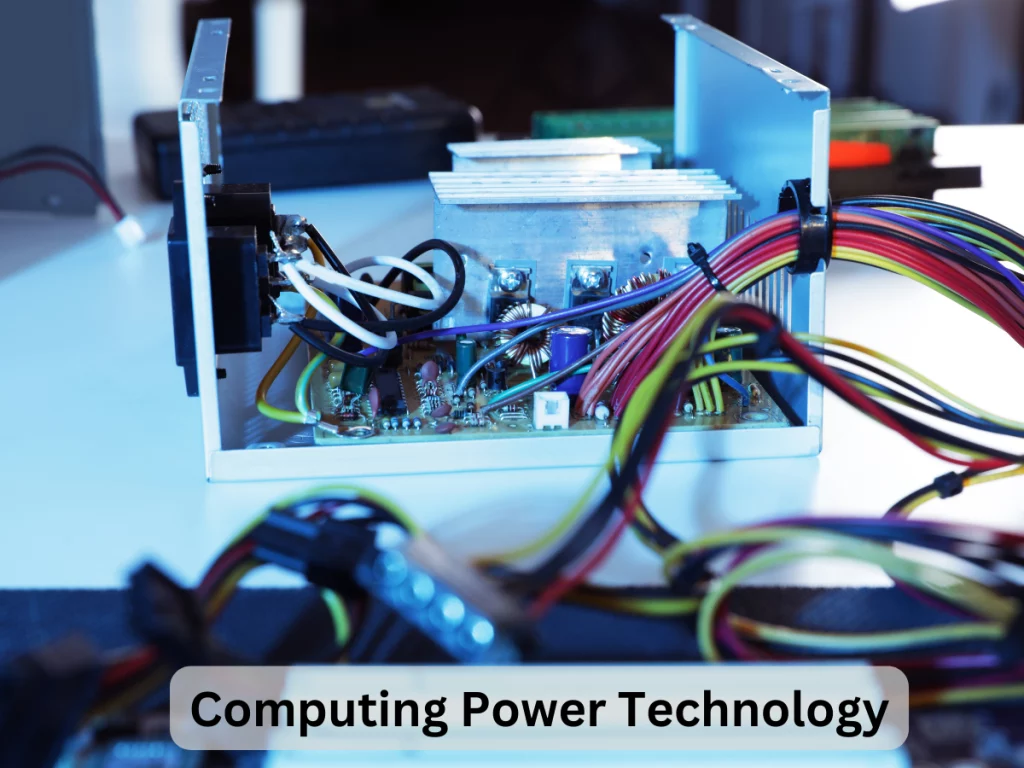
computing power technology stands as the cornerstone of innovation and progress. From the early days of room-sized mainframes to the era of quantum computing, the evolution of computing power has been nothing short of remarkable.
Components of Computing Power
Central to computing power are its core components: processors, memory, and storage. Processors, often referred to as the brain of the computer, execute instructions and perform calculations. Memory, including RAM and cache memory, provides temporary storage for data and instructions, while storage devices like hard drives and solid-state drives store data for long-term use.
The Role of Moore’s Law
Moore’s Law, proposed by Intel co-founder Gordon Moore in 1965, states that the number of transistors on a microchip doubles approximately every two years, leading to a continuous increase in computing power and performance. This principle has guided the semiconductor industry for decades, driving innovation and miniaturization in electronic devices.
Quantum Computing: The Next Frontier
Understanding Quantum Computing
Quantum computing represents a paradigm shift in computing power, harnessing the principles of quantum mechanics to perform complex calculations at an unprecedented speed. Unlike classical computers that use binary bits, quantum computers use quantum bits or qubits, which can exist in multiple states simultaneously, enabling exponential computational power.
Potential Applications
The potential applications of quantum computing are vast, ranging from cryptography and cybersecurity to drug discovery, optimization problems, and artificial intelligence. Quantum computers have the potential to solve complex problems that are currently intractable for classical computers, opening new frontiers in scientific research and technological innovation.
Artificial Intelligence and Machine Learning
Artificial intelligence (AI) and machine learning (ML) algorithms rely heavily on computing power to process vast amounts of data and perform complex computations. From image recognition and natural language processing to autonomous vehicles and predictive analytics, AI and ML applications are transforming industries and reshaping the way we live and work.
Cloud Computing
Definition and Concept
Cloud computing leverages a network of remote servers to store, manage, and process data over the internet, offering on-demand access to computing resources and services. It provides scalability, flexibility, and cost-efficiency, allowing organizations to scale their IT infrastructure according to their needs without the burden of managing physical hardware.
Benefits and Challenges
The benefits of cloud computing include reduced capital expenditure, increased agility, and global accessibility. However, challenges such as security concerns, data privacy issues, and vendor lock-in pose significant considerations for organizations adopting cloud-based solutions.
Edge Computing
Definition and Importance
Edge computing decentralizes computing resources by moving data processing closer to the source of data generation, reducing latency and bandwidth usage. It is particularly relevant in scenarios requiring real-time data processing and low-latency applications, such as IoT devices, autonomous vehicles, and industrial automation.
Advantages Over Traditional Cloud Computing
Edge computing offers several advantages over traditional cloud computing, including improved performance, enhanced data privacy, and resilience to network outages. By distributing computing tasks across edge devices and centralized cloud servers, organizations can achieve a balance between local processing and cloud-based services.
High-Performance Computing (HPC)
Overview and Use Cases
High-performance computing (HPC) refers to the use of supercomputers and parallel processing techniques to solve complex computational problems quickly. It finds applications in scientific research, weather forecasting, financial modeling, and engineering simulations, where massive computational power is required to process large datasets and perform intricate calculations.
Recent Developments
Recent advancements in HPC technology include the adoption of accelerators like graphics processing units (GPUs) and field-programmable gate arrays (FPGAs) to accelerate computation. Additionally, the convergence of HPC with AI and big data analytics is driving innovation in data-intensive applications and predictive modeling.
Green Computing
Importance of Energy Efficiency
Green computing focuses on reducing the environmental impact of computing technologies through energy-efficient design, resource optimization, and sustainable practices. With the increasing demand for computing resources and the proliferation of data centers, energy efficiency has become a critical consideration for minimizing carbon emissions and mitigating climate change.
Strategies for Sustainable Computing
Strategies for green computing include optimizing hardware and software design, implementing energy-efficient cooling systems, virtualizing servers, and adopting renewable energy sources. By embracing sustainable practices, organizations can reduce their carbon footprint and contribute to a greener, more environmentally friendly future.
Future Trends in Computing Power Technology
The future of computing power technology holds immense promise, with emerging trends such as neuromorphic computing, photonic computing, and DNA computing pushing the boundaries of traditional computing paradigms. As technology continues to evolve, we can expect to see breakthroughs in computational speed, energy efficiency, and scalability, paving the way for new innovations and discoveries.
Conclusion
In conclusion, computing power technology plays a pivotal role in driving digital innovation and enabling transformative advancements across various industries. From quantum computing and artificial intelligence to cloud computing and edge computing, the landscape of computing power is evolving rapidly, offering new possibilities and challenges. By staying abreast of emerging trends and embracing sustainable practices, we can harness the full potential of computing power technology to address complex problems and shape a better future for humanity.
FAQs
What is the significance of computing power technology?
Computing power technology enables the processing and analysis of vast amounts of data, driving innovation and progress across industries.
How does quantum computing differ from classical computing?
Quantum computing harnesses the principles of quantum mechanics to perform calculations using qubits, offering exponential computational power compared to classical binary bits.
What are some real-world applications of artificial intelligence?
Artificial intelligence finds applications in various domains, including healthcare diagnostics, autonomous vehicles, financial trading, and virtual assistants.
What are the benefits of edge computing over traditional cloud computing?
Edge computing offers improved performance, reduced latency, and enhanced data privacy by processing data closer to the source of generation, unlike traditional cloud computing that relies on centralized servers.
How can organizations promote green computing practices?
Organizations can promote green computing by optimizing hardware design, adopting energy-efficient technologies, and leveraging renewable energy sources to minimize environmental impact.

